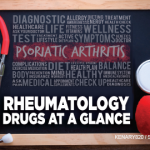Without Adverse Effects
In the BeST study, patients treated with infliximab who had achieved a disease activity score (DAS) of 2.4 or less fared better than those who did not achieve that benchmark when the drug was stopped.2 Overall, 58% were able to have an infliximab-free holiday of more than a year. Rapid improvement with the first course of infliximab, being a non-smoker and the absence of anti-citrullinated protein antibodies was a combination that favored a prolonged drug-free period.
Dr. Allaart said that, in general, predicting which patients may be able to remain off medication for an extended period of time is difficult. You can look at this positively, she said, because “it means you can try it in everyone.”
Overall, 50 of 104 patients in the study had to restart infliximab after a median of 17 months off the therapy. Among those patients, 84% regained a DAS of less than 2.4 within about three months. Researchers saw no difference between those who were started on infliximab initially and those who had a delayed start, Dr. Allaart said.
Subsequent studies have found those who experienced flares had worse immediate scores on the Health Assessment Questionnaire, a measure of disability, and were more likely to go on to have radiographic progression.3 But this was not necessarily linked with drug tapering, she said.
“We clearly saw that the minority of flares was preceded by a tapering effort,” she said. “So [flares] can occur at any time and [were] not clearly a result of our tapering effort.”
In the IMPROVED study, another strategy trial involving drug stoppages in certain patients, higher doses of methotrexate and prednisone were given to bring on low-
disease activity as quickly as possible.4 As soon as patients had a DAS of 1.6, researchers began tapering drugs. More patients in the IMPROVED study achieved remission and drug-free remission than those in the BeST study, Dr. Allaart said, suggesting that setting an aggressive treatment goal yields benefits in terms of the ability to stop medications.
An “earlier, more aggressive target results in better drug-free remission,” she said.
In Sum
The prevailing picture painted by the data should encourage physicians and patients to slow and stop medication when a patient’s RA has been well controlled for a long period of time, Dr. Allaart said.
“We are treating our patients [so they can lead] as normal lives as possible,” Dr. Allaart said. “And as normal as possible includes taking as [few] medications as possible.”
Monitoring these patients is essential, especially once drugs are stopped.
Physicians should “keep our office doors open, to say to our patients, ‘As soon as you think that you are losing your drug-free remission, as soon as you feel you’re deteriorating, you have access to me. I can see you,’” Dr. Allaart concluded.

